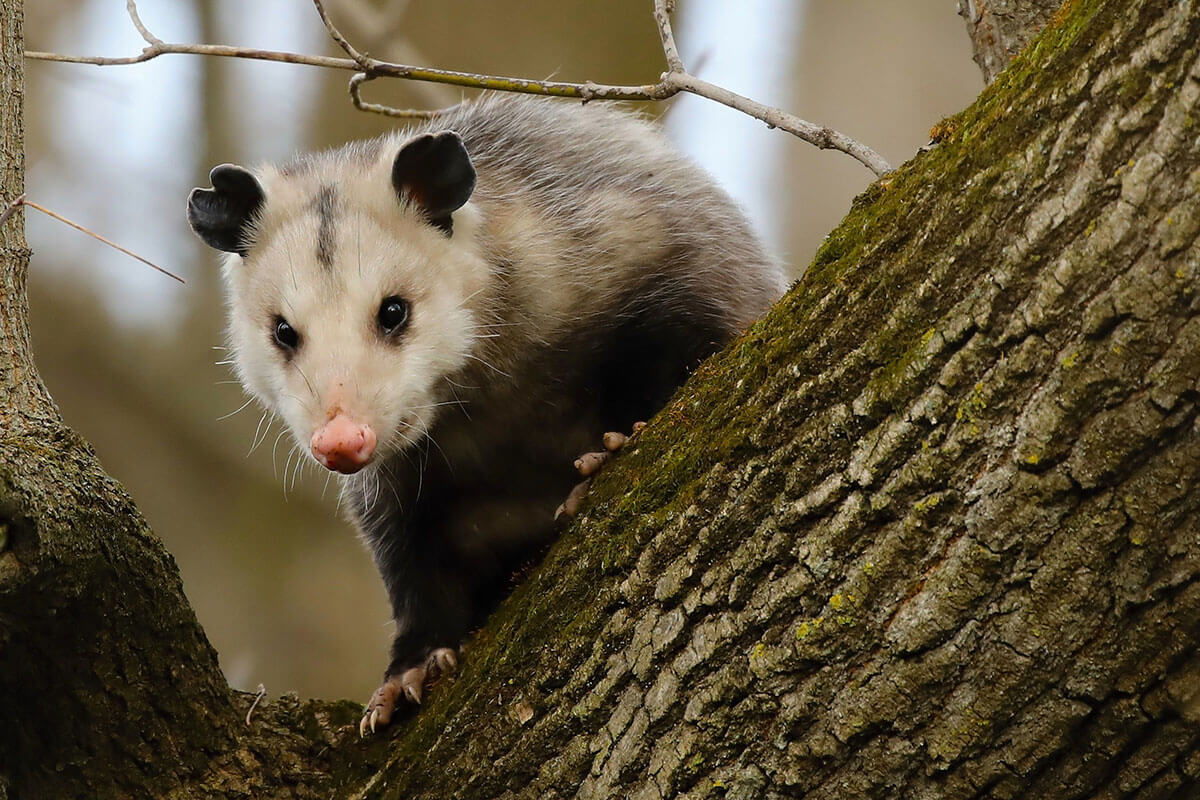Virginia Opossums

Opossums are easily recognized because of their resemblance to a large furry rat. They are found throughout North America, from Central America and Mexico in the south, to east of the Rocky Mountains and north into southwestern Ontario. Opossums are also found along the west coast of the United States. Their range appears to be expanding northward.
Physical Attributes
- Heavy-set body.
- Long head with a pointed snout.
- Faces have long whiskers.
- Long, tapered rat-like tails with a scaly appearance.
- Females have a fur-lined pouch to carry their young.
- The color of the opossum varies by the region. Northern populations have thick underfur that is white in color with black tips. The pale guard hairs give the Opossum a gray appearance. In southern populations, the underfur is much sparser. Both northern and southern populations have white cheek hairs.
- Total length is 25" – 40" (645 – 1,017 mm), tail length is 9" – 19" (225 – 475 mm).
- Males are larger than females.
- Male weight ranging from 4 – 14 LBS (1.8 – 6.3 kg) and female weight ranging from 0.6 – 8.2 LBS (0.3 – 3.7 kg).
Food
Opossums are omnivorous, and a majority of their diet is composed of insects and carrion. Opossums are also known to eat plants, including fruits and grains in season.
Parenthood
The mating season for opossums lasts from January to July. Birth occurs about 12.5 – 12 days after copulation. The average litter size ranges from 7 to 9. Depending on latitude, opossums have 1 or 2 litters per year.
The young opossums weigh about 0.005 OZ (0.16 grams) at birth. They are fixed to the nipple for the first 50 to 65 days of their lives. By 95 to 105 days, the young no longer depend on their mother. There is no maternal bond between the mother and young after they are weaned. Females are able to breed in their first season.
Behavior & Habitat
Opossums are nocturnal animals and have very poor social development. Females tend to live in groups, but the males fight when confined together. Groups of opossums are composed primarily of young because of their short lifespan.
They have a defensive tactic called (appropriately enough) “playing possum”, where the animal fakes death to thwart an attack and reaches a state of catatonia.
These small animals, both male and female, are very aggressive. They use various forms of intimidation to defend themselves, but usually play dead when they encounter a more powerful opponent.
Opossums usually travel across the land, but will swim in some cases to escape danger. For grooming, opossums use their hind feet to clean their fur and wash their faces with their fore feet. To transport her young, a mother places them on her tail.
They are found in a variety of environments, but prefer wet areas, especially streams and swamps. It is hard to determine the exact home range of an opossum because of their unusual movement patterns.
References
- “Virginia Opossum”, Nature and Wildlife database eNature.com
- The University of Michigan Museum of Zoology Animal Diversity Web
